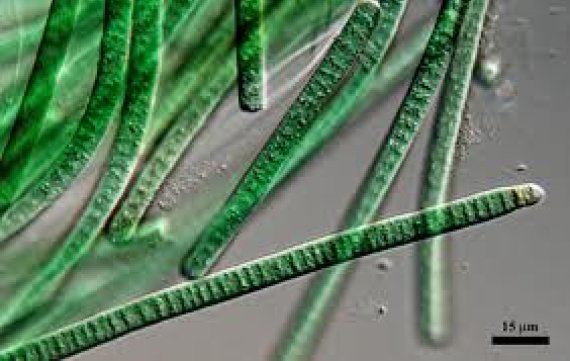This warning is given by Wageningen blue-green algae experts in the scientific journal Toxicon. It is sparked off by an investigation into the death of a golden retriever last year. The dog appeared to have succumbed to anatoxin-a, a toxin produced by blue-green algae, which is not among those screened in the Netherlands. The dog had swum in the IJ Lake.
In the soil
The standard procedure in the Netherlands is to screen recreational waters for the presence of five species of blue-green algae (cyanobacteria). These are species which live in water or form layers which float on water. These tests overlook benthic blue-green algae species which live in the soil. This is wrong, says PhD candidate and blue-green algae researcher Els Faassen of the Aquatic Ecology and Water Quality Management Group. The dead dog is the lifeless proof. The dog died last May, several hours after swimming in the IJ Lake. The symptoms pointed to an affliction of the nervous system. Cramp-like muscular contractions leading quickly to death, Faassen explains, are precisely the symptoms which typify the blue-green algae toxin anatoxin-a. ‘This toxin vigorously attacks the signal transfer from the nerves to the muscles. It takes effect already within several hours.
More victims
Faassen and his team proved that the toxin was found in the stomach of the dog and in blue-green algae samples taken from beaches of the IJ Lake. The exact species involved is still unknown but it falls under the genus Phormidium. According to Faassen, this is the first time in the Netherlands that there is proof that a dog had died from anatoxin-a poisoning. The golden retriever is probably not the only victim. In the same spring, the IJ Lake had claimed the lives of more dogs. Moreover, the toxin is found in other locations. ‘We have taken samples from many more locations in the past summers and found the presence of anatoxin-a, albeit in lower concentrations than in the IJ Lake. These results have yet to be published.’
More
Anatoxin-a is also harmful to humans. But Faassen says there is no reason for panic. All along, high concentrations of the toxin have only been found in the IJ Lake, where it is produced by benthic species. ‘The blue-green algae form a mat-like structure in the soil. Chances of them getting into humans are not big.’ But there is cause for concern. ‘Some of the blue-green algae species living in water can also produce anatoxin-a and a few other toxins.’ Therefore, present monitoring protocols for blue-green algae have to be revised, says Faassen. ‘We are now on the lookout for just a few very common species which can produce microcystins. These are toxins which affect the liver and other organs. But more should be done.’

